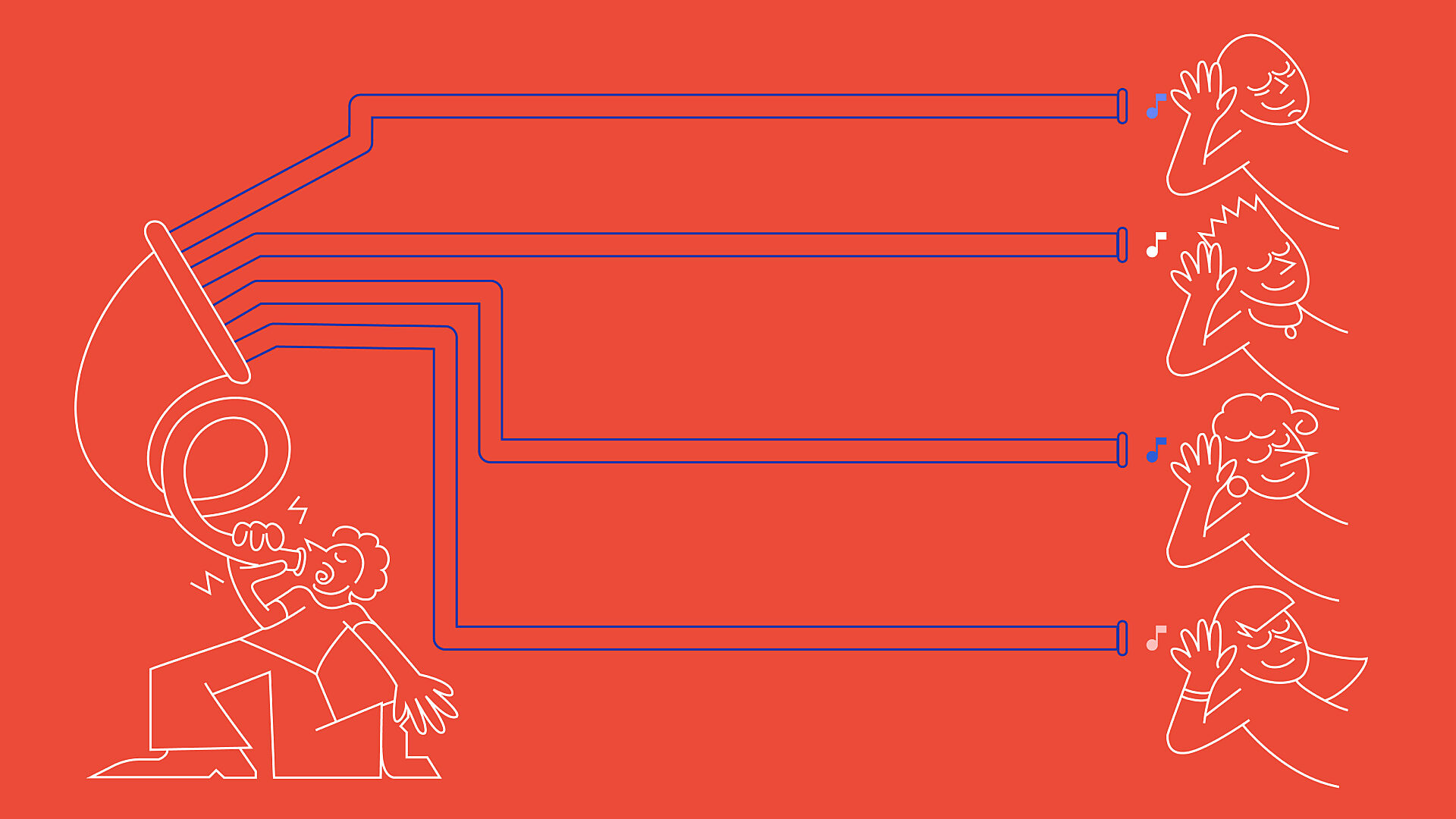
Inclusive communication: What is it and how do you do it?
By Catherine Foisy, copywriter
Around the world, inclusive writing continues to gain momentum. In Quebec, it’s even made its way into TV ads. And while language is an integral part of making communications more inclusive, there’s more to it than that. Here’s the proof.
There are numerous ways to communicate: with words, music, design, photography, video, spoken word, dance, non-verbal communication and more. For a communication piece to be truly inclusive, every element needs to be carefully considered.
OK, so what’s inclusive communication?
It’s a communication approach that aims to eliminate any form of discrimination. It requires thinking about every component and stage of a message before it sees the light of day so that everyone can recognize themselves in the final product.
Take this example: a brand unveils a new campaign with an inclusive slogan, a diverse cast and digital pieces that meet the highest standards of web accessibility. Would the campaign be just as inclusive if everyone in it looked the same? Not at all. And that’s why it’s important to think about every aspect of the message in an inclusive way, beyond just the writing.

How can you communicate inclusively from A to Z?
By adopting inclusive writing to make more people visible and eliminate discriminatory words (this also means avoiding editorial slips like “we’re looking for young, dynamic employees,” which discriminates against older people).
By featuring a diverse range of people (culturally, socially, age, class, education, accent, gender, mobility, sexuality... and more).
By being aware of our own biases and working to deconstruct the stereotypes they perpetuate. For example, casting people of colour as cab drivers or portraying larger people as lazy reinforces stereotypes.
By telling different stories. Not only is this good for inclusivity but it’s also good for you: if people who are traditionally overlooked can recognize themselves in your communications, they’re more likely to choose your brand.
By normalizing marginalized groups. For example, if people who use wheelchairs are only offered roles where their disability is central to the plot, this puts them in a box rather than showing them as people who deserve to be seen beyond their disability.
By adopting an intersectional approach. This means paying attention to all forms of dominance, oppression and discrimination. For example, when we talk about inclusive writing, we may contrast the needs of gender-diverse people with those of people with reading or vision difficulties. Approaching inclusive writing through an intersectional approach means making choices that take both realities into consideration, without pitting them against each other.

How can we adopt an inclusive approach that’s genuine rather than performative?
For your inclusive approach to be sincere, it needs to go beyond what’s perceptible to the public. Your workplace, internal policies and hiring processes (among other things) need to be inclusive too.
Imagine an organization whose ads feature employees in wheelchairs but whose head office isn’t accessible to them. This is what we call a performative approach or social washing. Here are a few questions to ask yourself to make sure your approach is sincere:
- Does your organization have internal policies that promote respect and inclusion for everyone? Does its communication policy match the rest of its actions?
- Is each step inclusive? This means everything from the brief, strategy, meetings, creative and production to the media strategy.
- Do you work with people from a variety of backgrounds? For example, if you’re developing an advertising campaign aimed at the 2SLGBTQIA+ community, can you include members of this community in your thinking and, above all, pay them what they’re worth?
- Do you value the process itself? Valuing the inclusivity process over the outcome means understanding that communicating inclusively isn’t always visible. In other words: place as much, if not more, importance on the process than on the final product.
The Fonds de solidarité FTQ’s mission is to contribute to Quebec’s economic growth while enabling all workers to enjoy a comfortable retirement. Choosing a diverse cast for its ads allows the Fonds to represent its network of workers, investors, entrepreneurs and people with varied backgrounds and profiles. In other words, it doesn’t seek to showcase diversity to look good or ease its conscience, but rather to accurately reflect its extensive network. That’s why its inclusive approach can be considered genuine rather than performative.
How can you integrate your target audience into your thinking?
By adapting your communications to a target audience. This is why an organization that targets the general population may not make the same choices as one with a very specific audience.
Want to appoint a woman to your board of directors? Make sure you aren’t using male-coded language in your job descriptions. You may not realize it, but words such as “assertive,” “competitive” and “strong” can give the impression that you’re looking to recruit men and may dissuade women from applying.
The St-Hubert recruitment campaign was designed to attract Gen Z, a diverse generation that expects brands to be more inclusive. We appealed to this target by using familiar, gender-neutral language and by opting for a platform like TikTok.
Are you developing a campaign aimed at an immigrant community who may not be completely fluent in English? Remember to opt for accessible wording and steer clear of local jargon.
Will your ad be broadcast on several traditional and digital platforms? Can your message be understood by the visually impaired? Sometimes, small details like having your character say “your sweater is beautiful” rather than “it’s beautiful” can make your communication understandable, and therefore inclusive, for communities that use video descriptions.
Are you developing a website? Is it accessible to everyone? (If you haven’t already done so, I encourage you to check out my colleagues’ article on web accessibility!)
There are many factors to consider when it comes to inclusive communication – but you don’t have to work out everything at once. A word of advice? Get started. Opt for an evolutionary approach, don’t strive for perfection and be ready to make mistakes. After all, it’s always better to be wrong than not to try at all.


